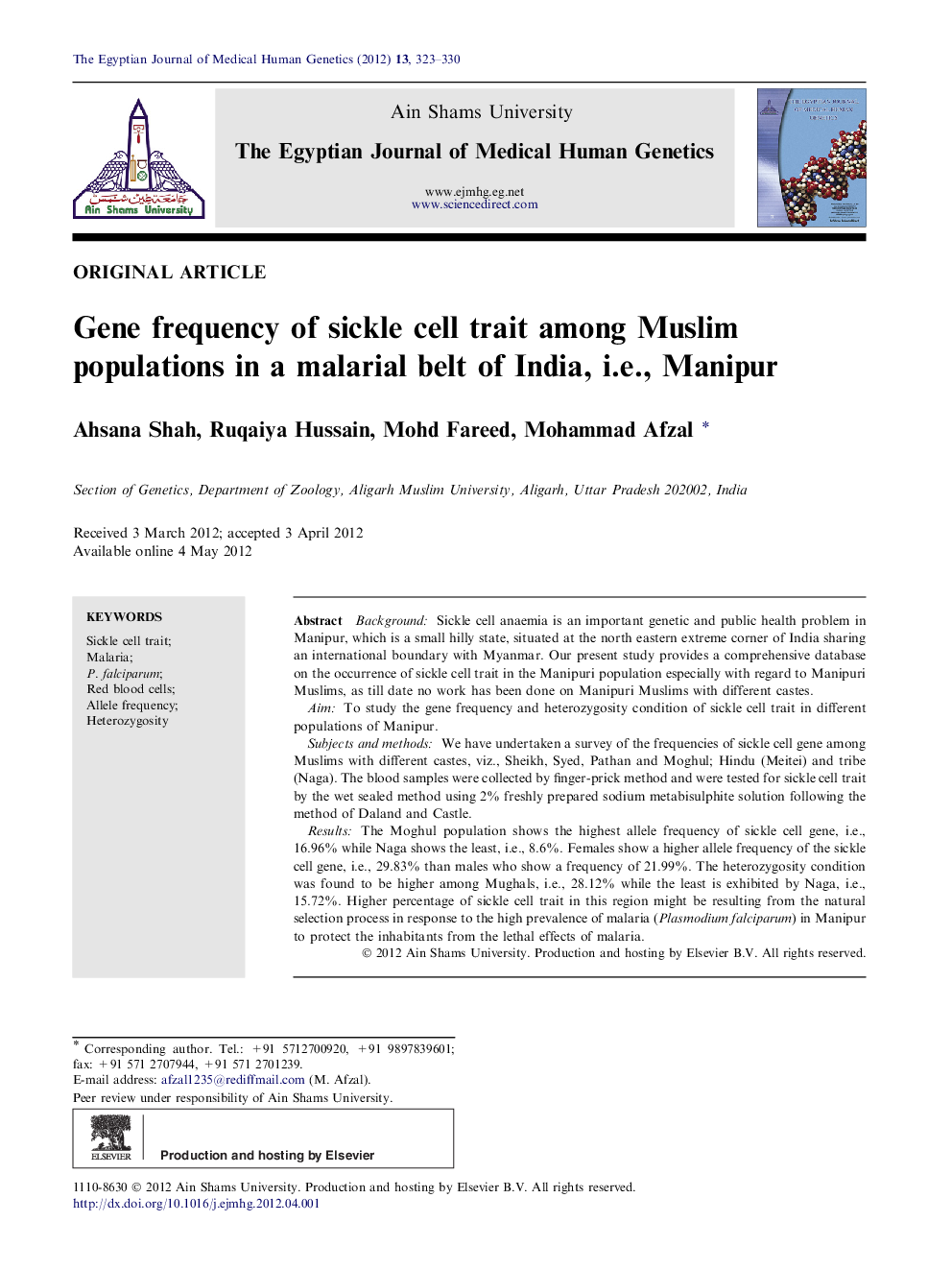| Article ID | Journal | Published Year | Pages | File Type |
|---|---|---|---|---|
| 2178213 | Egyptian Journal of Medical Human Genetics | 2012 | 8 Pages |
BackgroundSickle cell anaemia is an important genetic and public health problem in Manipur, which is a small hilly state, situated at the north eastern extreme corner of India sharing an international boundary with Myanmar. Our present study provides a comprehensive database on the occurrence of sickle cell trait in the Manipuri population especially with regard to Manipuri Muslims, as till date no work has been done on Manipuri Muslims with different castes.AimTo study the gene frequency and heterozygosity condition of sickle cell trait in different populations of Manipur.Subjects and methodsWe have undertaken a survey of the frequencies of sickle cell gene among Muslims with different castes, viz., Sheikh, Syed, Pathan and Moghul; Hindu (Meitei) and tribe (Naga). The blood samples were collected by finger-prick method and were tested for sickle cell trait by the wet sealed method using 2% freshly prepared sodium metabisulphite solution following the method of Daland and Castle.ResultsThe Moghul population shows the highest allele frequency of sickle cell gene, i.e., 16.96% while Naga shows the least, i.e., 8.6%. Females show a higher allele frequency of the sickle cell gene, i.e., 29.83% than males who show a frequency of 21.99%. The heterozygosity condition was found to be higher among Mughals, i.e., 28.12% while the least is exhibited by Naga, i.e., 15.72%. Higher percentage of sickle cell trait in this region might be resulting from the natural selection process in response to the high prevalence of malaria (Plasmodium falciparum) in Manipur to protect the inhabitants from the lethal effects of malaria.
